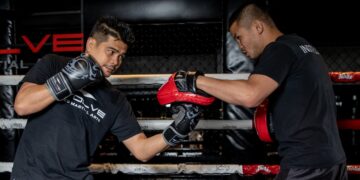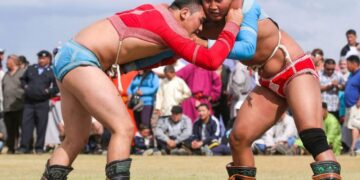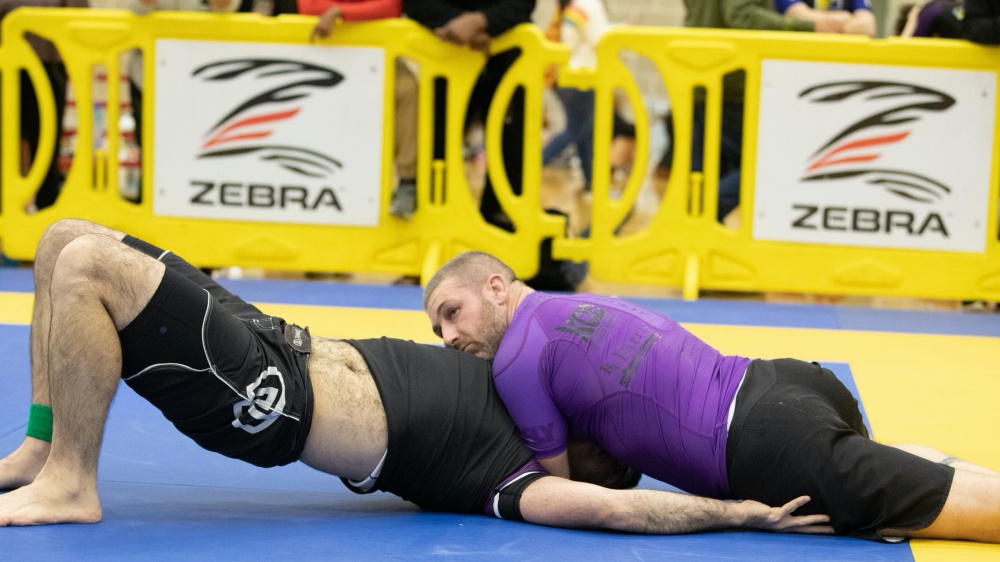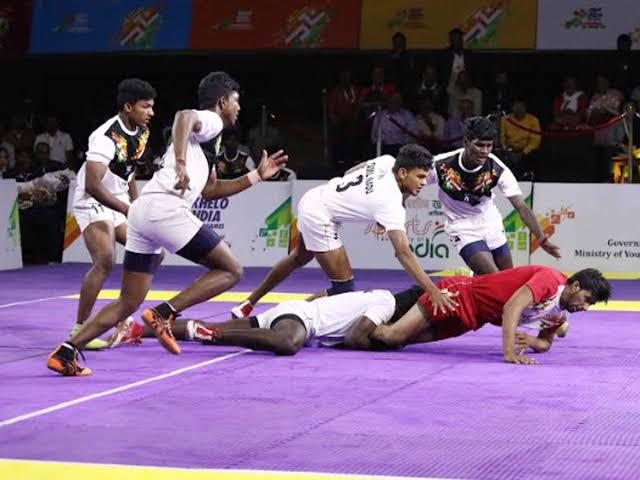In Brazilian Jiu-Jitsu, the ability to control an opponent and dictate the pace of a match is just as important as finishing a submission. Many practitioners focus heavily on submissions, but without solid positional control, even the best submission attempts can fail. This is where positional transitions become critical.
Knowing how to move seamlessly between control points can give you a significant advantage when you are in a dominant top position. It allows you to maintain pressure, advance your attacks, and ultimately set up higher-percentage submissions. In this article, we’ll discuss the bread-and-butter transitions from top control.
BJJ Is Not Just Submissions
Many beginners enter BJJ with the idea that the goal is always to submit their opponent. While submissions are the finishing touch of a fight, positional control and movement are the foundation of high-level grappling. Without proper control, submission attempts can be easily countered, and an opponent can escape before the technique is fully applied.
In a real fight or competition, a BJJ practitioner who prioritizes control and transitions will always have the advantage. The ability to move effortlessly between dominant positions allows you to stay one step ahead of your opponent while maintaining pressure. High-level grapplers know that submissions are much easier to land when an opponent is exhausted from constantly defending positional transitions.
Grappling And Positional Dominance
Positional dominance is one of the core concepts in BJJ. The positional hierarchy in BJJ dictates that some positions offer more control and offensive opportunities than others. Generally, dominant positions include side control, mount, knee on belly, and back control.
By understanding how to transition between these positions, a grappler can tire out their opponent by forcing them to constantly escape. It also sets up more effective submissions by keeping the opponent in a defensive state, thereby giving you more opportunities to attack. A practitioner who can fluidly move from one dominant position to another will have a much easier time applying submissions and dictating the match.
The Value Of Transitions
Knowing how to transition between top positions makes you a more versatile and dangerous grappler. Instead of staying static in one position, you can constantly adjust to your opponent’s movements, making it nearly impossible for them to escape.
Positional transitions also help you retain control in scrambles. If an opponent manages to escape one position, instead of losing control completely, you can transition into another dominant position, keeping the pressure on.
In addition, transitioning between positions allows you to apply weight distribution effectively. For example, moving from side control to mount allows you to increase your pressure and pin the opponent more effectively, limiting their ability to escape.
Now, let’s break down five easy positional transitions that every BJJ practitioner should master.
1) Side Control To Mount
One of the most fundamental transitions in BJJ is moving from side control to full mount. This transition increases control over the opponent and sets up multiple submission opportunities.
Once you establish strong side control, apply chest-to-chest pressure, then slide your knee across the opponent’s belly while keeping their hips controlled. Once your knee passes their centerline, establish your mount position by settling your weight and securing a strong base. This transition is especially useful in competition and self-defense, as it puts the opponent in a far worse position where their escape options are limited.
2) Knee On Belly To Mount
The knee on belly position is a great way to control an opponent while maintaining mobility. One of the best transitions from this position is moving into full mount.
To execute this transition, maintain heavy pressure with your knee on the opponent’s abdomen while controlling their upper body. Once they react by turning or trying to escape, use their movement against them by sliding your free leg over their body into mount. This transition is quick and effective, allowing you to establish a dominant position before they have time to react. This technique is often used in high-paced rolling sessions and MMA, as it allows a fighter to quickly switch from a mobile position to a dominant one.
3) Side Control To North-South
The north-south position is often underutilized but offers very good control and sets up chokes and arm attacks. Transitioning from side control to north-south is an effective way to prevent an opponent from escaping while opening up new submission opportunities.
The key to this transition is staying tight and maintaining pressure. When moving to north-south, slide your chest over their upper body while circling your hips around their head. Keeping your weight low prevents them from recovering their guard or escaping. This transition is useful for setting up north-south chokes, kimuras, and arm attacks, making it a valuable addition to any top game.
4) Mount To High Mount
When in the mount position, many opponents will try to bridge and push against your hips to escape. A simple way to counter this and increase your control is by transitioning into high mount.
To execute this transition, slowly walk your knees up the opponent’s body, moving toward their armpits. This removes their ability to bridge effectively and traps their arms, limiting their defensive options. Once in high mount, you can set up submissions like the armbar or mounted triangle. This transition is a great way to shut down an opponent’s movement and make them feel trapped, leading to easier submission opportunities.
5) Mount To S Mount
The S mount is an incredibly powerful position that sets up high-percentage arm attacks such as the armbar and triangle chokes. Transitioning from mount to S mount is a simple way to isolate your opponent’s arm while maintaining control.
To do this, shift your weight slightly to one side while sliding your knee under the opponent’s shoulder. Your back leg should adjust to create a stable “S” shape with your legs. This transition keeps you secure while giving you direct access to the opponent’s arms for attacks. The S mount is particularly useful against opponents who are defending well in regular mount, as it forces them into a more vulnerable position.
Key Fundamentals For Building A Fluid Grappler
Positional transitions are a key part of BJJ, and mastering the fundamentals will make you a far more effective grappler. The best transitions are often the simplest and easiest to execute. While flashy movements can be exciting, efficient and controlled transitions are what win matches.
A fluid grappler is someone who can seamlessly move between dominant positions, making it incredibly difficult for opponents to escape or counterattack. The key to developing this skill is repetition and awareness. The more you practice your positional transitions, the more natural they will become.
Drilling And Practice
To make these transitions second nature, consistent drilling is essential. Practicing positional drills with a training partner allows you to refine your movement and recognize when and how to transition effectively. Positional sparring is where you focus only on transitioning between positions. Doing this can greatly help reinforce skills in live rolling.
Conclusion
While submissions are an important aspect of BJJ, positional control and fluid transitions are what truly separate great grapplers from the rest. Learning how to move effortlessly between dominant positions keeps you in control and makes your submissions more effective. Incorporating these transitions into your game will surely make your control that much harder to stop!
You may also like:
The Top 5 Ways To Attack With The Armbar From Different Positions
Many strikers don’t think they need to learn how to wrestle until they feel what it’s like to battle a strong grappler. Striking and grappling are the two opposite ends of martial arts training, and…
The armbar is one of the most powerful and versatile submissions in BJJ. It is a fundamental technique taught to beginners yet remains a favorite among advanced practitioners and world champions. The armbar is effective…
“Punch a black belt in the face; he becomes a brown belt. Punch him again, purple…” These are the words of Carlson Gracie, one of the pioneers of mixed martial arts. Playing guard in Brazilian…
Brazilian Jiu-Jitsu is widely recognized for its physical benefits, such as improved strength, flexibility, and endurance. However, beyond its physical aspects, BJJ also provides significant mental health benefits. In today’s fast-paced world, many people struggle…
Brazilian Jiu-Jitsu is a constantly evolving martial art that rewards those who explore new positions and attacking strategies. The arm saddle is one of the more advanced yet highly effective positions that have gained recognition…
Brazilian Jiu-Jitsu is a constantly evolving martial art. Over the years, practitioners have continually searched for ways to improve their ability to control, sweep, and submit opponents. Among the many guard variations available, the shin-to-shin…
The lead hook can be a double-edged sword. Land perfectly, and your opponent’s night might be over. Throw it half-heartedly and you might fight yourself eating a hard right that puts you to sleep. The…
The switch kick is a fundamental kicking technique used in Muay Thai that has spread to other combat sports like mixed martial arts and kickboxing. It’s a crafty way to turn your lead leg (weaker…
Feeling spent after an intense martial arts training session is something all fighters relate to. Rubbery legs, aching shoulders, and sore arms are often signs you’ve put in lots of hard work in the gym….
Singapore is known for its diverse and delicious food options, but eating out can get expensive. As inflation news hits the headlines regularly, you might wonder whether you can still find an affordable dining place…
It doesn’t sound like much, but journaling your martial arts journey helps you to reach your full potential. Dedicating yourself to martial arts often means learning several techniques weekly, drilling everything you’ve learned, and sparring…
Unstructured or more commonly known as ‘open’ sparring is a cornerstone of any martial art‘s fight preparation, and it’s the closest thing you can find in any gym to real competition. Structured sparring has its…

































